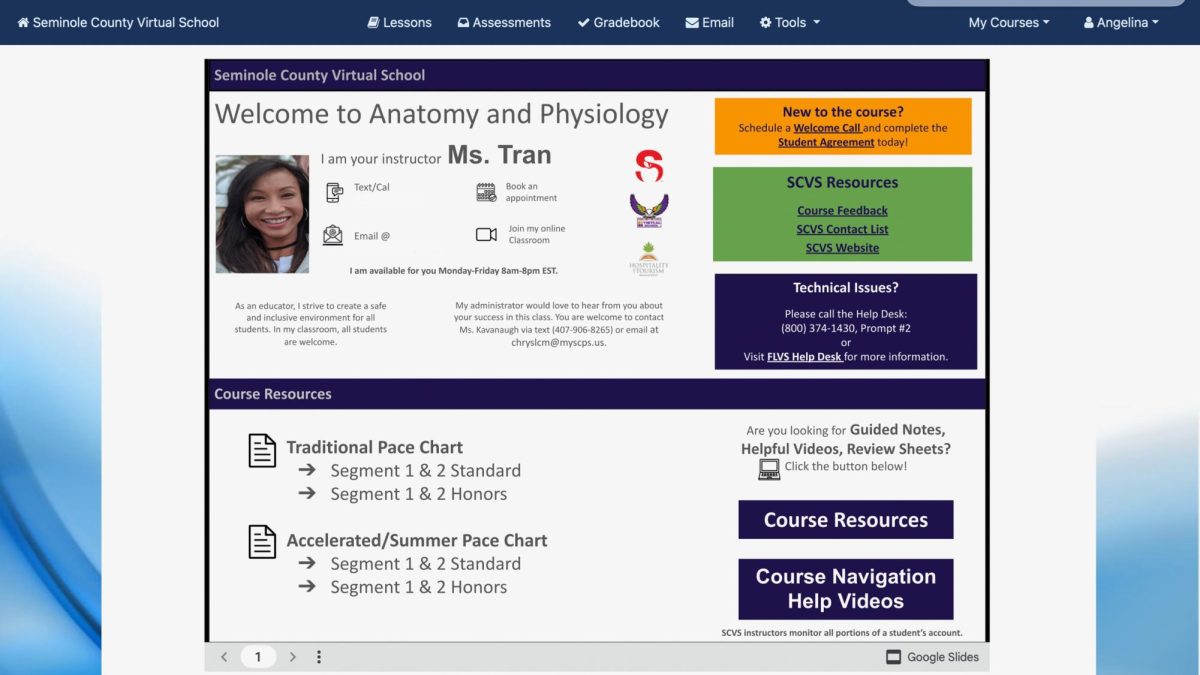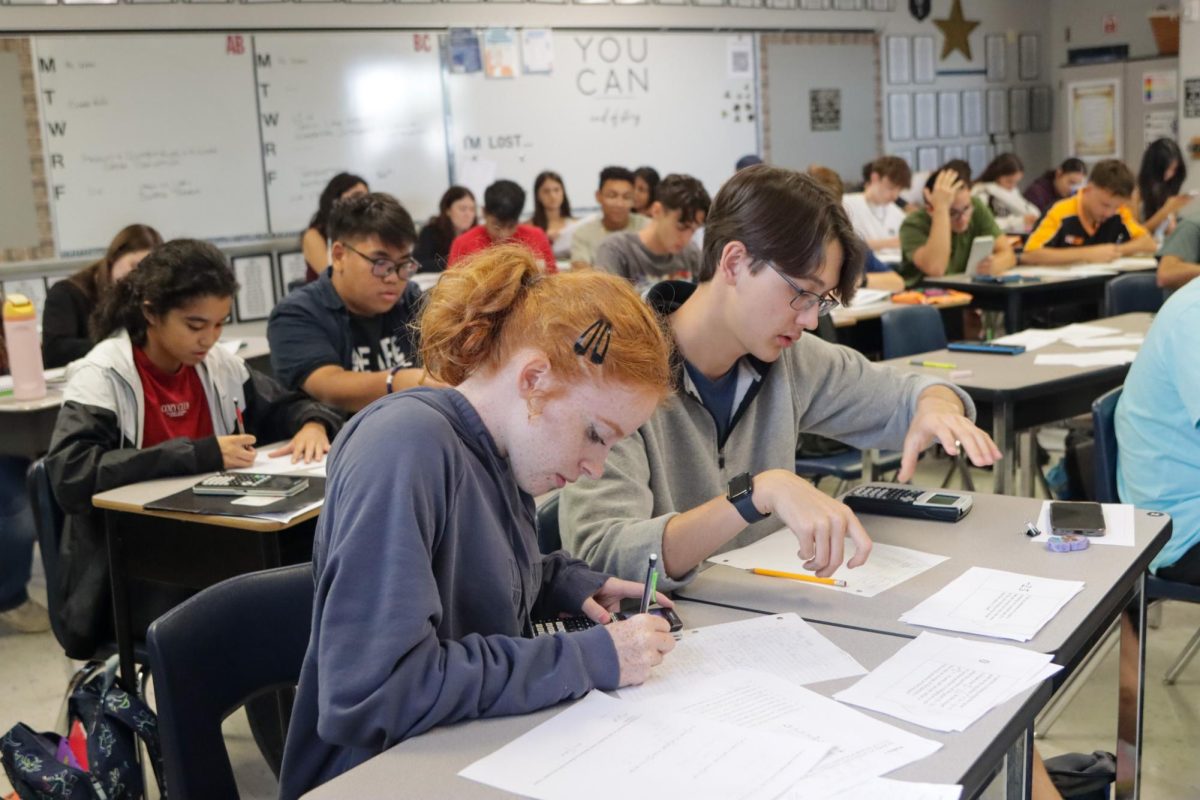At first, senior Angelina Yip loved the idea of taking some online classes, getting a couple extra hours at home to nap, watch TV or listen to music. However, like several hundred of her classmates who also take online classes, Yip found it tougher than she expected.
Virtual education began gaining popularity after the COVID-19 pandemic, with 93% of students switching to online learning after the 2019-2020 school year, according to the National Council for State Authorization Reciprocity Agreements. Though students returned to face-to-face learning, virtual school became a popular and more convenient option, and this year, more than 600 students are off campus for either the first or last period of the day. Students now prefer to learn from the comfort of their own home (or any available space). Sounds pretty nice, right?
However, these online classes have many downsides, especially for busy high school students. Initially designed to be easy to access and navigate, these classes have become the burden most high school students are not fully ready for.
For Yip, leaving school almost every day at 10 a.m. means going home to work on her three online classes: Spanish 4 Honors, Anatomy and Physiology and AP Biology. After only completing an assignment or two, Yip is called back up to school for an honor society/club meeting at 2:30 p.m. Virtual classes are inconvenient when students participate in multiple clubs, extracurriculars, and sports.
As for the functionality of the course, the amount of resources and guides is abundant, as there are links to find all lessons, homework and rubric materials, but virtual classes require you to learn completely on your own. Teachers, despite having office hours from 8 a.m. to 8 p.m., can take days to answer their forms of communication. Waiting hours for a text answering a question about a homework problem or to receive a module password to work ahead hinders the students’ ability to rely on their teacher in times of need.
And when you can get in contact with teachers, it is often difficult to receive helpful feedback. After every Discussion Based Assessment call, a mandatory assignment to check students’ understanding of the unit material, teachers leave copy-and-pasted comments, consisting of a “Good job! and “Good luck!,” in regards to the module test, and the dozens of concepts they somehow managed to cover in only five questions.
Students often begin the course with confidence, doing one-to-two assignments a week and staying on good terms with the teacher. However, once the in-person classwork starts to pile-up, it becomes significantly harder to find the motivation to make time for virtual classes. Days turn into weeks and suddenly you are months behind and your teacher is texting you threatening to kick you out of the course.
With the power of virtual classes comes great responsibility, since no one is holding your hand reminding you to get your work done. Put high school students and time management together and you have a dangerous combination. You are no longer held accountable for doing the work yourself or turning it in on time since there are no due dates. Although virtual classes use the same Turnitin software to check for written assignments plagiarism, this doesn’t stop some students from cheating. With the assignments being solely online, it is easy for a student to copy and paste a question and get a quick answer off the internet. While it could be said that there is a comparable quality of education between online and in-person classes, much of learning is self-taught. Unless you are a proactive student who goes past the lesson materials and teaches themselves new concepts, then you will not get much out of an online class besides a final grade.
Apart from the negatives, virtual classes do exactly what students want them to: free up time. Lots of high schoolers have jobs, babysitting, family obligations, to name a few, that require extra time outside of school. With virtual classes, they can get ahead with their classwork to better use their time. By being able to access courses anywhere and complete work on their own time, virtual classes offer flexibility for any type of student. But, when it comes down to it, the costs of virtual classes outweigh the benefits. By the end of the class, you will be wishing you had stayed in school.
So, when deciding if an online class would best suit your learning style, you must consider the discipline and self-motivation that drives virtual curriculum. If you can guarantee that you will keep up with work and complete the notes and assignments while still retaining information, then it might be for you. But for the majority of high school students who procrastinate and cram everything into the end of the quarter, virtual classes end up being like an eCampus assignment that was due last week (and you never knew it existed).








